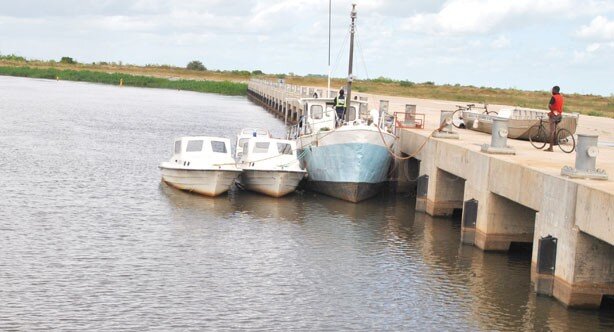
The Mozambican government has again rejected calls by the Malawi government to use Zambezi and Shire rivers for commercial shipping.
According to Club of Mozambique, this was disclosed at a press conference on Thursday in Maputo where a senior official in the Mozambican Transport Ministry Jafar Ruby said the Malawian project was “neither viable nor sustainable in the short, medium and long term”.

Reports show that Malawian officials once again raised the question of using the Shire-Zambezi waterway for Malawian trade, protesting that the Mozambican authorities are creating difficulties.
However, Mozambique has made it clear that it thought the matter was definitively settled when a study carried out by an international consultancy company, Hydroplan, found that the project was not viable.
Malawi, Zambia and Mozambique signed a memorandum of understanding in April 2007, but after the Hydroplan study, it is reported that Mozambique notified the Malawian and Zambian governments that it was withdrawing from the Memorandum with effect as from June 2016.
“The study had shown that the Shire-Zambezi waterway is not commercially navigable in its natural state, and under these conditions, the general objective of the proposed project – the reduction of transport costs in terms of time and money, cannot be achieved.
“Using the river for Malawi’s trade would imply regular dredging and removal of plants, which would be extremely expensive. The maximum amount of goods that could be moved along the two rivers would be 273,200 tonnes per year. Dredging would cost 30 million US dollars a year, and the removal of aquatic plants 50 million dollars a year. The figures show that the project is not viable,” said Raby.
The official further said Malawi has other far cheaper and less time-consuming options suggesting that Malawi is free to use the Mozambican ports of Beira and Nacala, moving goods to and from the ports by rail or road.
“Transport by river would take between 10 and 12 days, compared with a day and a half from Lilongwe to Beira, and three and a half days from Blantyre to Nacala,” Raby said.
Mozambique has further suggested that Malawi is free to be using the Sena railway line to Beira, a railway system which would involve rehabilitating 193 kilometres of track.
Mozambique has also suggested that river port of Nsanje, which Malawi built on the Shire, could be linked to the planned Mozambican port of Macuse, on the coast of Zambezia province (a distance of 476 kilometres), and existing roads could link Blantyre to the port of Quelimane (425 kilometres).
The Shire-Zambezi Waterway Project was conceived by the late Malawian President Bingu wa Mutharika. Although it had not secured Mozambican approval, Mutharika’s government even went as far as building the port at Nsanje at a cost of twenty million US dollars.














